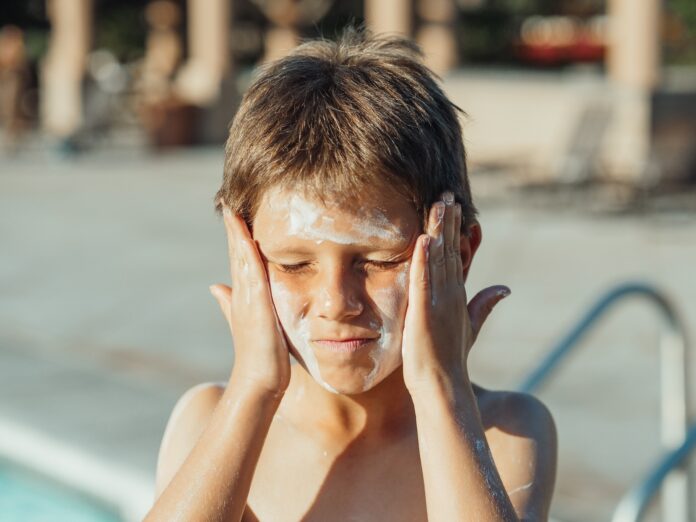The weather this week and the next is expected to be tropical. The sun is shining and clouds are scarce. The danger of burning is therefore lurking. Sharon Dodemont, a dermatologist at the Catharina Hospital in Eindhoven, discusses misconceptions about sunscreen and provides tips.
Getting a nice tan is the goal of many people when they sit in the sun. Sunscreen should prevent you from getting sunburnt. Still, things are going a bit wrong there. Tanning is also a sign of sun damage, says dermatologist Sharon Dodemont.
“We see more and more people in their twenties with skin cancer spots.”
“You get tan because your body produces extra pigment. Your body does this to protect itself, because it senses damage. Only when this damage is very extensive will your skin turn red. If you are tannned, there is already damage and that is also bad for you.”
More and more, the dermatologist sees that people underestimate the danger of the sun. “Nowadays, people spend so much time in the sun that we increasingly see people in their twenties with skin cancer spots. In the past it was people in their seventies or eighties.”
There is also a big misunderstanding about protection from sunburn. Some people think that the SPF number of sunscreen represents the temperature. So you would lubricate with SPF thirty at thirty degrees. But that’s not right.
“When you sweat, the sunscreen disappears from your skin.”
“The SPF actually indicates how much longer you can stay in the sun.” Suppose you can sit in the sun for 10 minutes until you burn yourself. If you then apply SPF 30, you can sit in the sun for 300 minutes.”
However, this calculation is not always correct. “People often apply too thin. If you sweat, the sunscreen also disappears from your skin. You should apply every two hours and every hour if you sweat a lot. In the shade also, you burn.”
As soon as you go swimming or exercise, you should also apply more often. “All the sunscreen will then disappear from your skin. Once you are dry, you have to reapply all over.”
Many people think that you don’t have to put on sunscreen in the shade. “You burn less quickly in the shade, but it still happens. You also have to endure a lot of sun during walking, cycling and gardening. That is often underestimated.
“Put sunscreen as thick as peanut butter on a sandwich.”
But when and how often should you apply it exactly? The Dutch Association for Dermatology recommends SPF 15 for daily use and SPF 30 or higher if you expose your skin to the sun.
On weather sites you can often see how strong the sun is and also until what time you should apply sunscreen, starting from Solar UV 3 (ultraviolet radiation) it is recommended to apply sunscreen.
For people who wear make-up, Dodemont has a handy tip. “People sometimes complain that they have just finished their make-up and then have to apply sunscreen. I tell them: use a protective day cream in the morning, because then you already have a base.”
This base alone is not enough for the whole day. “Nowadays you also have sprays that you can apply over your make-up. They are less effective, but they’re better than nothing.”
Source: Omroep Brabant
For Eindhoven News: Lila Mehrez
















